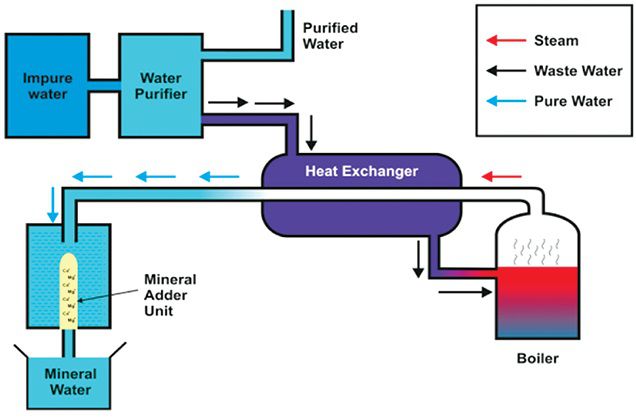KCG Team Recovers 85% RO Waste Water
Published on by Water Network Research, Official research team of The Water Network in Academic
A group of students from KCG College of Engineering has found a way to make RO reject (unusable) water consumable. This is significant because for every litre of RO (reverse osmosis) purified water, over 4 litres are wasted. Even modern RO water purifiers have an efficiency of only 40%.
The hardness and alkalinity of the reject water is beyond consumption levels and it is not suitable for usage, even for washing. The technology developed by the students can be integrated with RO water purifiers and recover 85% of waste water.
Final year students A Vinayak Kailash, S Renish Samuel, N Vignesh and the second year student Bala Surya said, “The volume of water wasted is more than that obtained in the RO process. For every 10 litres of water rendered to the purifier system, less than 3-4 litres is made fit for consumption. The remaining waste water contains high amounts of mineral salts. The level of total hardness and alkalinity is generally beyond 500 mg per litre, but the value should be less than 200 mg per litre for it to be consumable. We designed a unit using a heat exchanger-cum-condenser and boiler unit to reduce this wastage.”
Here is how it works: The waste water from the purifier is passed through the heat exchanger unit and then to the boiler unit, where the water is converted into steam leaving behind all impurities. Water condensation takes place in the heat exchanger and this water is pumped into a water mineral unit, where minerals are added. It is then fed back to the input of the water purifier system for usual purification.
The students’ guide and assistant professor M Manoj, said, “We have given the samples to Chennai Metro Water for testing and the results are awaited. The Greenvironment water quality testing lab at IIT-Madras established that our technology is effective. We reduced the alkalinity in a borewell water sample from 112.5 mg per litre to 12.5 mg per litre, and the hardness from 300 mg per litre to 20 mg per litre. The value of total dissolved salts (TDS) in parts per million was reduced from 1,600 to 28.” One of the students, Vinayak Kailash, said the technology has immense commercial value and they are planning to patent it. “We just developed a rough prototype using local vessels for our project. If developed it as a product, we can further increase the efficiency,” he said.
Here is How it Works
Filtering Impurities: The waste water from the purifier is passed through the heat exchanger unit and then to the boiler unit, where the water is converted into steam leaving behind all impurities
Back to Usual Process: Water condensation takes place in the heat exchanger and this water is pumped into a water mineral unit, where minerals are added. It is then fed back to the input of the water purifier system for usual purification.
Source: New Indian Express
Media
Taxonomy
- Treatment
- Technology
- Water & Wastewater
- India